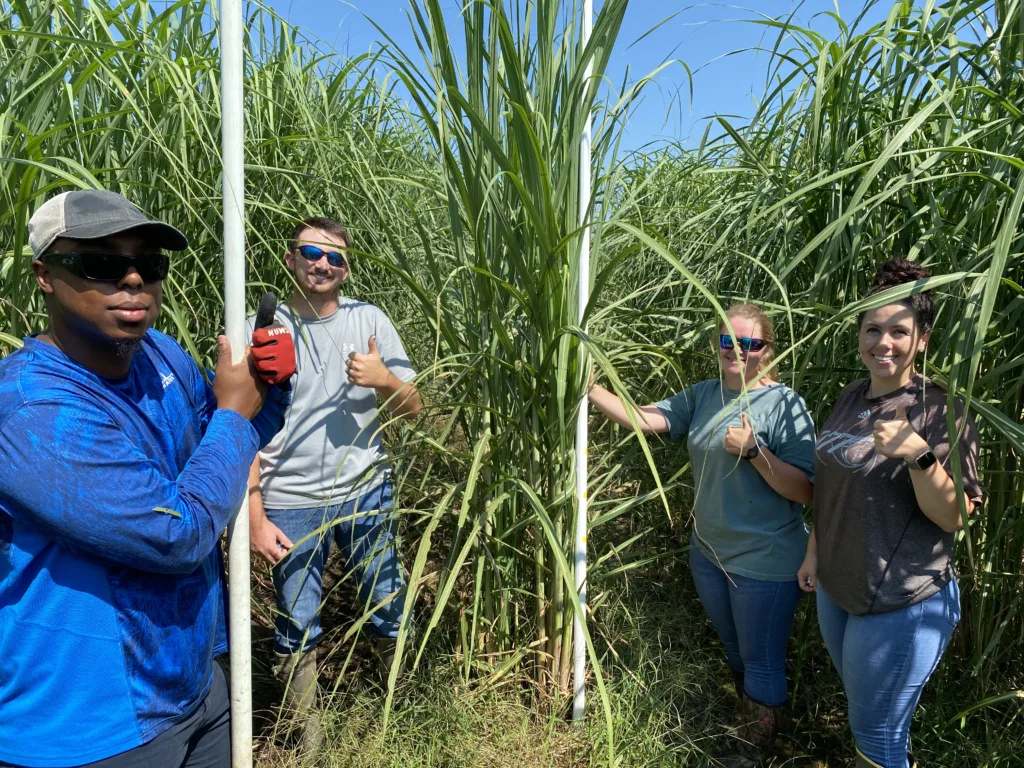
As a perennial grass that can produce renewable biomass, sugarcane has great potential as a bioenergy crop. It is cultivated in the tropics primarily for its high sugar content, but in more recent years, researchers have been exploring sugarcane hybrids as sources of biomass for alternative fuels.
However, testing the growth of sugarcane is necessary in the areas north of Louisiana, as they exceed the latitudes where cane is traditionally produced.
Energycane is a type of sugarcane hybrid that has been selected for high biomass, high fiber, and low sugar. Because of wide hybridization and hybrid vigor, energycane is associated with a high biomass yield per unit land, increased disease resistance, and cold weather tolerance. This affords energycane a greater potential climate range than current commercial sugarcane cultivars, making it a strong candidate for cellulosic ethanol production.
The feasibility of producing energycane as a bioenergy crop at or north of 33° N has been in question since 2007 when testing first occurred at Mississippi State University in Starkville, Miss., and six of the nine genotypes in the test froze and died. Since then, researchers at the U.S. Department of Agriculture’s Agricultural Research Service (USDA ARS) Sugarcane Research Unit have continued to develop new energycane genotypes, but there has been little to no information about the cold tolerance of these new genotypes.
In their recent study, published in MDPI Agriculture, CABBI researchers evaluated 19 of these energycane genotypes for winter survivability and other traits relevant to bioenergy production over the course of two years at Starkville.
This test location was three degrees north of what is generally considered to be the boundary of normal Saccharum production areas. Over the two years of this test, 16 of the 19 test genotypes equaled or exceeded the control genotype in terms of average total theoretical ethanol production.
“It is good to see so many of the new genotypes perform well at this location,” said Anna Hale, USDA ARS Research Geneticist and co-author of the study.
Several of the genotypes that performed the best at Starkville have been sent 2 degrees of latitude (138 miles) further north to Alabama A&M University for additional stress testing.
Expansion of the area of adaptation for sugarcane and its hybrid forms will help diversify crop production schemes. The growth of energycane further north will give farmers another high-yield bioenergy crop to work with, and its perennial nature means that it can help stabilize soil.
Other co-authors on this study include Brian Baldwin (Mississippi State University Department of Plant & Soil Sciences), Jesse Morrison (Mississippi State University Department of Plant & Soil Sciences), and Wyatt Eason (Mississippi Bureau of Plant Industries).
— Article by CABBI Communications Specialist April Wendling